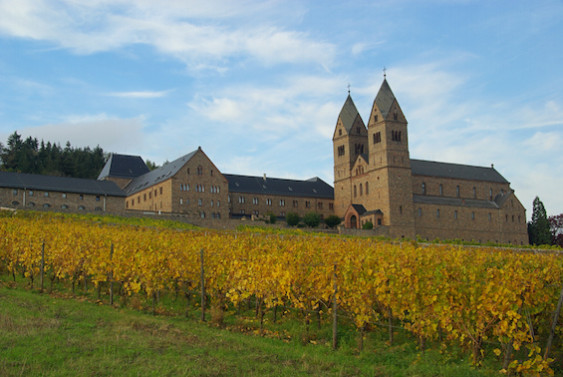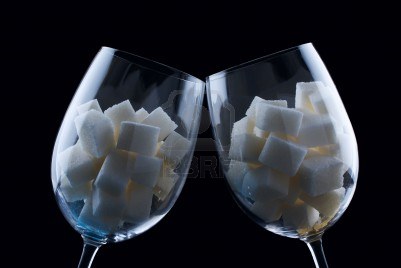When it comes to German Riesling, you might think the only varieties are sweet, sweeter and sweetest. But there’s actually a full spectrum of flavor profiles that varies from bone-dry to tooth-achingly saccharine. And since these are German wines we’re talking about, the system for classifying them is quite organized!

Wines from specific German regions like the Rheingau are painstakingly categorized.
The system Germans use to classify Riesling is actually predicated on the ripeness levels of the grapes used to make the wine rather than the sweetness of the finished wine. But knowing the ripeness levels will also help you predict how sweet that wine will be when you open the bottle.
Landwein is sort of like basic-level table wine. That is followed by Qualitätswein, which indicates the grapes used to make them have reached a minimum level of ripeness and that the wine comes from one of 13 classified regions. This is also where the wine starts to get good. In terms of this classification, the terms to know from driest to sweetest are…
Trocken: This is a dry style of wine, lots of acid and tang to it, great for an aperitif.
Halbtrocken: As the name suggests, this means “half-dry” and is slightly sweeter.
Feinherb: Another way to describe an off-dry wine.
Liebliche: Wines here can range from semi-dry to quite sweet, with up to 45 grams per liter of residual sugar.
Süss: The sweetest level, with over 45 grams of residual sugar. You’ll be able to tell if you have a cavity or not on the first sip!
Next up is Prädikatswein, which indicates both a higher ripeness level in the grapes and a higher overall level of quality.

The pyramid of German wine classification. Image source: Wines of Germany.
Kabinett: The driest wines are labeled Kabinett, which literally means “cabinet” and indicates that they are reserve wines (and hence kept in the cabinet). The grapes are fully ripened and produce wines that vary from dry to semi-dry (meaning a bit sweeter), but with a lot of acidity that keeps them crisp.
Spätlese: This term literally means “late harvest” and indicates that the grapes have been picked at least a week after the regular harvest date. These wines are usually sweeter and more fruit-forward than Kabinett, though they can also be relatively dry. In general, they’ll go great with creamy dishes, and heavier white meats like chicken and pork.
Auslese: These wines are usually semi-sweet and are made from hand-selected bunches of grapes that have developed botrytis, or what is called “noble rot.” Botrytis is a fungus that basically sucks the water out of grape berries, thus resulting in a higher sugar concentration and sweeter wines. These are the wines that taste great with cheese plates and desserts.

Wines classified as Spätlese (late harvest) or above are made from grapes left on the vine longer for more ripeness.
Beerenauslese: Just rolls off the tongue, doesn’t it? So do the wines designated as such. Beerenauslese wines are made from individually selected grapes that have been infected by botrytis and produce very sweet wines. These are some of the best dessert wines in the world, and can get very expensive.
Trockenbeerenauslese: Quite a mouthful, and so are these wines! The term literally means, “dry select berry harvest.” It indicates that the grapes used to make it have shriveled up on the vine so that they’re almost raisins, meaning they are almost all sugar content with very little water. Wines designated Trockenbeerenauslese are very sweet, and very high quality.
Eiswein: Sounds like just what it means, “ice wine.” These are made from grapes that have frozen on the vine and are pressed while still frozen, so they have less water content and much more sugar. They’re usually at about the same sweetness level as Beerenauslese wines.

German labels actually have more to do with grape ripeness levels than wine sweetness.
The one other indication of how sweet your Riesling will be is the alcohol-by-volume percentage. As you probably know, fermentation is the conversion of sugar into alcohol. So in general, the lower the alcohol level, the higher the level of residual sugar in the wine and the sweeter it will be.
Have you relished Riesling lately? Tell me what you’ve been drinking by tweeting me @clustercrush!

